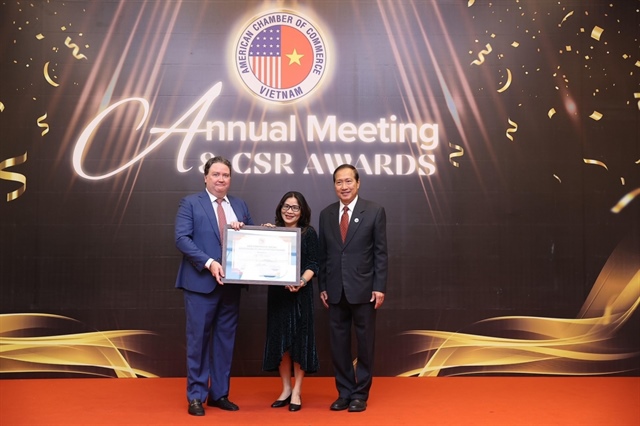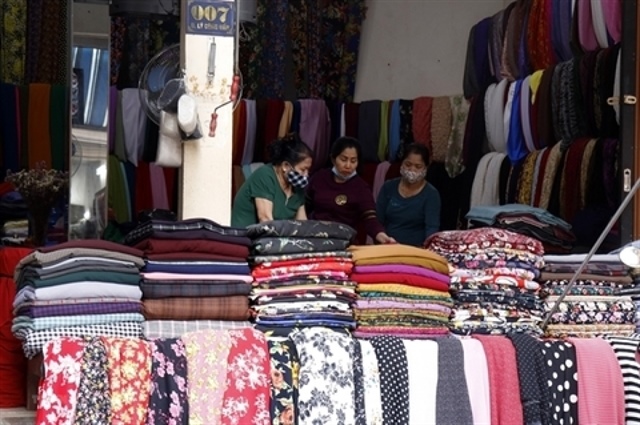Time for banks to bite the bullet and let the cleanup roll on: expert
Time for banks to bite the bullet and let the cleanup roll on: expert
Mr. John Sheehan - managing director of the Southeast Asia branch of Capital Services Group, a highly experienced consultant in international NPLs, has shared his thoughts on tackling bad debt in Vietnam in a recent interview with Tuoi Tre News.

In your presentation in Hanoi a few days ago, you suggested letting bad debts act as a part of the economic development process. Can you elaborate on this point?
Boom-bubble- burst is a normal recurring cycle in the modern economic world. I have seen four recurring cycles in Europe. The average normal market cycle over the past 70 years is between 14 and 18 years. The US went for 17 years on its last cycle. On this basis, the rest of SE Asia, which crashed in 1997, is on borrowed time if it survives past 2015 without correction!
We should not think badly of Vietnam or anywhere else if it corrects after a boom - it is a normal part of economic growing pains. The most important thing is to get on and clean up quickly - the quicker we clean up, the quicker there is a recovery.
Is it a complex process to solve bad debts? What are the most important measures in doing so?
It is not a complex process - the biggest issues are recognizing the true scale of the problem, then working out who is going to pay for the clean-up. The clean-up means bank losses when loans held on their balance sheets plummet in value. What is clear though from every other correction is that you have to clean up NPLs before markets can begin to recover, and economies rebound.
Vietnam has just established an asset management company (the Vietnam Asset Management Co – VAMC) to buy, sell and settle the bad debt of banks. Its registered capital is VND500 billion, while the amount of bad debts is estimated at about VND200 trillion. One of the first measures is to buy bad debts by special bonds issued by VAMC. Banks can use these bonds to be recapitalized at the central bank/State Bank of Vietnam. What is your assessment of the efficiency of a company like VAMC? What do you think about their target?
The biggest problem VAMC has is scale. The cost of cleanup will be many multiples of the cash that VAMC has been allocated to start with.
The other issue is price. NPL values are determined by the market, not VAMC, the banks or government. The price of NPLs is usually considerably lower than anyone expects or hopes, which puts up the cost of funding the losses and clean-up further.
I think the only way that Vietnam can afford to finance the losses is with the help of big foreign investors. In order to do this, the country has to introduce better NPL monetization infrastructure. This not only benefits investors, but the governments and the banks too because the better the NPL infrastructure, the higher the price the banks will achieve either selling or monetizing its NPLs. Good NPL infrastructure is a big win for everyone.
One problem is that some banks are trying to hide their bad debts because they assume that the market will recover and offer a chance to deal with their problem. Given your experience in this area, do you think it is wise for banks to do so?
“Pretend and extend” as we call it in the NPL industry, ie., restructuring delinquent loans in a falling market, just causes delay and increases ultimate loss for the bank. As in most things in life “putting things off to tomorrow” is usually the worst thing to do! NPLs are “perishable” and lose value with time. The sooner the banks bite the bullet and get on with sorting out bad loans, the better off everyone will be.
What are the best practices and experiences of countries at a similar development level to Vietnam in dealing with bad debts? What are your recommendations for Vietnam?
We have seen various approaches taken around the world. The international “blueprint” is the South Korean KAMCO model that they used after the 1997 Crisis.
Successful NPL clean-ups demand five things:
1. Prompt action to solve the NPL problem that is sweeping and decisive.
2. Pricing reality must prevail- the best way to achieve market price is by auctioning NPLs (third party valuations are always wrong!).
3. Financing the losses- in the case of both Korea and Thailand after 1997, funding was provided by the IMF.
4. New capital is essential for liquidity and to kick-start new credit. Given that there is always a domestic capital famine this can generally only be provided by foreign investors.
5. NPL infrastructure; legal, regulatory and financial, must be created for effective NPL monetization.
In addition to adopting the five principles listed above, KAMCO took things one step further by not only achieving market price for NPLs through public auction, but retaining future additional income and upside for the state by selling into equity participation joint venture partnerships with successful bidders. NPLs initially sold in a range of 12 to 43 cents on the dollar, but after sharing in future revenues with bidders, the state was able to boost its revenue from sales by 50%.
KAMCO also did not limit NPL sales to failed banks, but additionally used the exercise as a means of shutting down institutions that failed to match its capital adequacy hurdles. KAMCO was subsequently able to finance losses through the issue of asset backed securities, which further opened up the domestic market to international investors and substantially enhanced the credit status of the country as a whole.
tuoitrenews
























